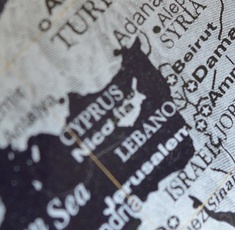
Five Islands of The Levant
Last updated: Wednesday July 27th, 2022
Report this blog
Introduction
Hello again friends and thank you for your patience.
I have been extremely busy at work with a new contract, and not had much spare time to allocate to writing my blogs. I hope you understand. I have been writing a little each week but there doesn't seem to be enough hours in the day. Anyway, no more of my moaning and meandering, on to the blog....
In this edition of the "Five Islands" blog series we are examining the area known as The Levant. "Where's that ?" I hear you shout. Well I shall tell you. Gather round children....
The Levant is a phrase coined in the 14th century by the British. It originates from French and is thought to mean "rising", the nearest modern phrase I suppose would be "levitate" . It is thought to refer to the rising sun in the east and commonly was believed to mean any lands to the east of those under Venetian control.
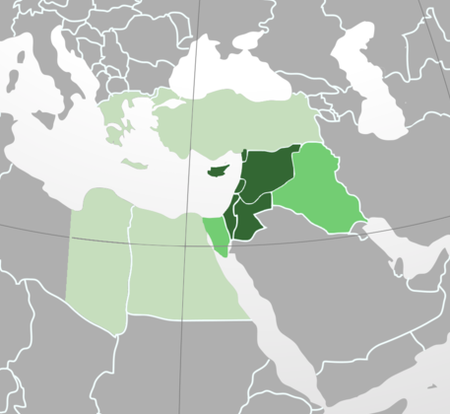
In the map above, the lighter green marks the historical area, the darker green is the area used in the 20th century, whilst the middle green colour represents countries that are sometimes added nowadays.
For the purposes of this blog, I shall be using the dark green area plus Turkey, although not all countries may be featured. (Jordan being the obvious one due to the lack of islands and only a tiny coastline.)
We shall start at the obvious point, being next to the end of the last blog about Greece, with Turkey...
Kekova (Turkiye)
Kekova is a small, currently uninhabited island off the southern coast of Turkiye in the Antalya region. It has an area of about 2 square miles, which is around 4.5 square kilometres.
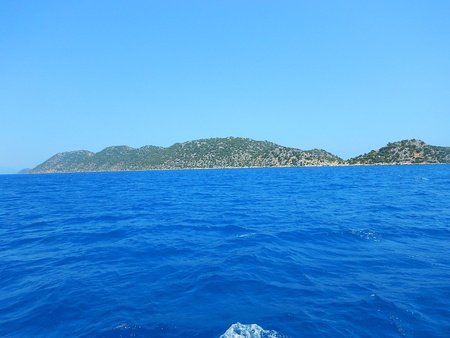
The island was a disputed territory between the nations of Italy and Turkey following the Italian occupation of some of the Greek islands. The dispute was resolved in a 1932 convention that gave the island to Turkey.
On the northern part of the island there is the ruined town of Dolchiste/Dolikisthe. It was destroyed in an earthquake in the Second Century, rebuilt and was still active as a dockyard during the Byzantine Empire era. It was finally abandoned due to incursions by Arab invaders.
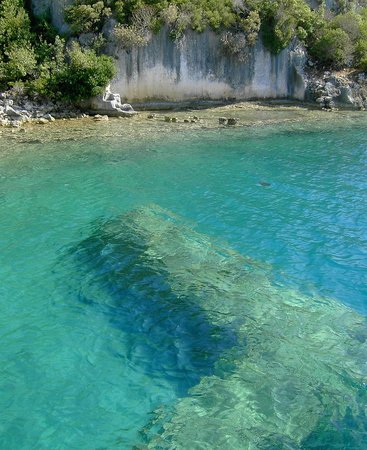
In January 1990 the entire region around the island and nearby coast was declared a specially protected area by the Turkish government. All swimming and diving in the area was only possible with a permit, although restrictions have recently been eased, diving near to the submerged ruins is still prohibited.
The island is only accesible by boat and trips can be taken from the nearby villages of Demre, Kaş, or Üçağız.
This website has some pictures and information.
Giresun Island (Turkiye)
Even though Giresun Island is small, just 4 hectares or, in old money, around 10 acres, it is still the largest Turkish Island on the Black Sea coast. It is located near the city of Giresun on the mainland.
There are ruins to a roofless temple that is said to have been built by Amazons for their religious festivals. The island has been home to various races over the centuries and Greeks, Romans and the Ottoman people have all left their mark.
A Roman fort was built in the 1st Century AD to protect the garrison from pirates, followed by a Byzantine monastery in the 5th or 6th centuries. It appears from studies that the island was a religious centre during this time.

The legendary tale of Jason, the Argonauts and the Golden Fleece is attributed to the island. Another legend associated with the island is of King Mithridates VI who was angry that his daughter had fallen in love with a poor shepherd. It is said that he imprisoned her on the island and then executed the shepherd leaving his body hanging in view of her cell. She commited suicide in her grief by hanging herself from the tower.
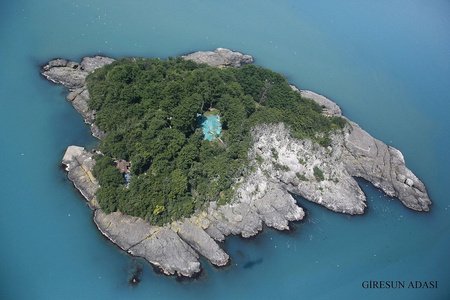
The island is now a bird reserve and can only be visited with a guide, however tours around the island are also available from nearby Giresun City.
This Youtube entry has many still shots from a visit to the island.
Arwad (Syria)
Arwad is situated about 3km off the coast near to the port of Tartus, the second largest port in Syria.
It has been inhabited since the second millenium BC, initially by the Phoenicians who named the village Arwad. It is the only inhabited island belonging to the Syrian nation.

Under the Phoenicians the village grew in size and had a considerable navy stationed there. However, in 1472BC, the island was captured by Egypt, even being mentioned in the campaigns of Ramesses II. It became a free city until sacked by the Romans in 38BC.
The city became a Christian diocese and was associated with the Bishop of Constantinople until 1295 when it was transfered to Famagusta, Cyprus.
Arwad was also an important staging post for the Crusades in the 13th century, and Pope Clement V formally awarded the island to the Knights Templar who kept around 1000 soldiers there.
In more recent times, the island was occupied by the French navy during the First World War as well as during WW2. In 1945 the French wanted to keep the island as an overseas territory, however it was ceded to Syria following pressure from the United States in 1946.
Towards the end of the 20th century the island's economy became more reliant on tourism. The civil war in the country has hardly affected the majority Sunni Muslim residents of the island.
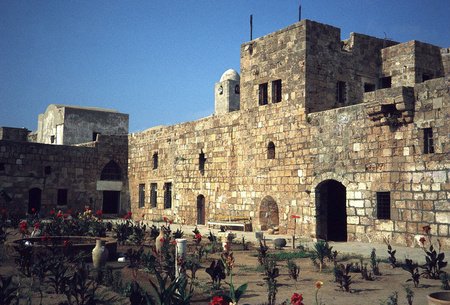
The island can be reached by boat from Tartus on the mainland .
This website has a more in depth history along with many photographs from the island.
Palm Islands (Lebanon)
This is actually three islands although the main one is called Palm Island, or sometimes Rabbit Island due to the large amount of rabbits, obviously! They are situated around 5.5 km away from the town of El Mina in Lebanon.
The group of islands and the surrounding waters are a designated Mediterranean Specially Protected Area.
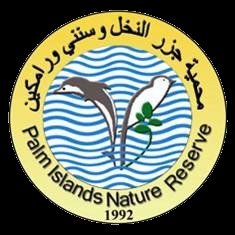
Excavations starting in 1973 revealed evidence of habitation during Roman times and also during the Crusades.
The Crusaders built a church that is believed to have been dedicated to Thomas the Apostle. It was here that Alice of Champagne was married to Bohemond IV of Antioch in 1224. Years later the island was the scene of a bloody massacre when the Marmelukes pursued the residents of Tripoli to the island after they fled the city. The islands was abandoned soon after.
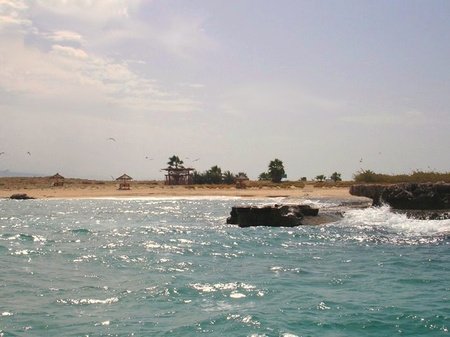
Being a nature reserve visiting is limited. You can reach the island by local ferry from El Mina, but only between July and September. Two rangers are permanently stationed on the island to prevent visiting at other times.
The nature reserves own website has more photos and information.
Adam's Rock (Israel)
Adam's Rock is hardly an island, more of an islet, although even that may be pushing the term a little. It is situated just offshore on the beach at Bat Yam just south of Tel Aviv.
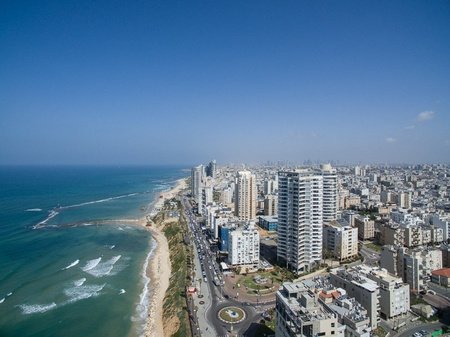
Adam's Rock is the remainder of a ancient ridge that has been eroded over many centuries.
Legend says that fish used to arrive at the island in shoals, kiss the rock, and continue on their way. Another legend recounts how the island represents the back gate to Heaven and it was the island to which God banished Adam and Eve. Nowadays the rock is situated on a man made breakwater that created a lagoon for safer swiming.
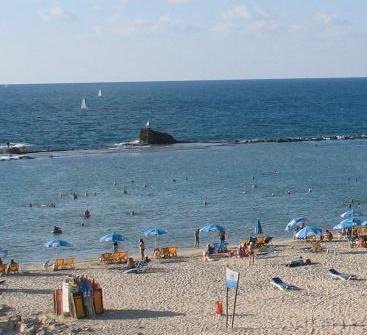
The rock can be reached easily by swimming across the lagoon.
This website has a more detailed history of the legends that surround the rock, but unfortunately no more pictures.
Summary
Once again, may I thank you for your patience. This blog edition has taken me a lot longer than I would of liked, mainly due to work and family commitments that obviously take precedence.
Anyway, it's finished now so onwards and upwards we go.What's next on the agenda for my blogs?
Well, the islands blogs will continue, heading off to Africa next, travelling around the coast anti-clockwise (Thats counter-clockwise for you guys over the pond), we'll see how far we get with the next five islands. There are less and less photos available on Wikipedia so I have to choose wisely, as the Knight in the Indiana Jones film said.
So that's it for now, oh, almost forgot, I am thinking of doing an interim stand alone blog about my working week. Now that we can upload our own photos I though you might like an insight into what I do for a living. Let me know what you think in the comments......
This blogs quote comes from the fabulous musical, Chitty Chitty Bang Bang...
"I'm on my way to far away, Ta-ta and toodle-loo, And fare thee well and bon voyage, Arrivederci too..."
